Aluminum has found its way into a myriad of today’s applications spanning from bicycle frames to sleek aerospace components.
However, this raw material must be uniquely and expertly fabricated to transform it into the functional masterpieces you exploit.
Let’s look at some fundamental aspects of fabricating aluminum.
What is Aluminum Tube Fabrication
Aluminum tube fabrication is a manipulation process that generates functional masterpieces for varying applications by altering the shape and formation of raw aluminum tubes.
This process allows industries such as the aerospace and construction industries to access lightweight yet strong components.
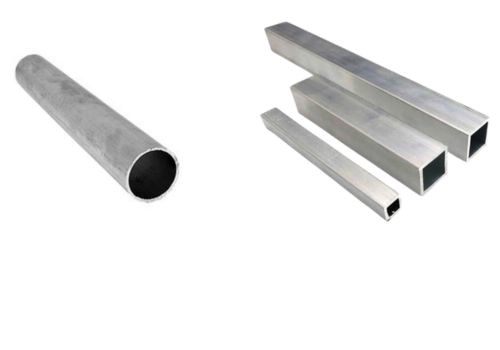
Aluminum Tube Fabrication Processes
To generate a custom-made aluminum tube or component for a specific application, you can employ numerous machining processes. These fabrication operations include:
· Heat Induction
This fabrication process is intended to manipulate the shape of your aluminum tube without necessarily deforming it. It exploits electromagnetic induction to transform your aluminum piece into a malleable state. In this state, you can fabricate your aluminum’s shape into curves without breaking your piece.
Advantages
- Faster Heating: It facilitates direct heat transfer, which leads to faster transformation into a malleable state thus fastening the fabrication process.
- Clean Welding: Heat induction hardly employs a flame which can result in the generation of soot. It also results in reduced oxidation.
- Energy Efficiency: This fabrication process guarantees direct heat transfer and this eliminates the possibility of heat wastage.
- Reduced Distortion: Heat induction focuses the heat on designated points of your aluminum tube. This reduces the risk of unwanted fabrication or deformation.
· Rolling
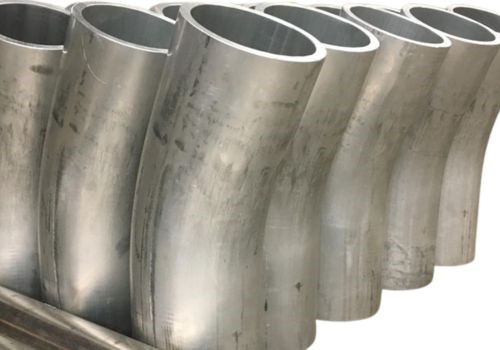
Rolling is primarily exploited to generate large-diameter aluminum pipes with an even wall thickness. This technique simply relies on a pair of specialized rollers, which convert your flat aluminum sheets into tailor-made tubes. Rolling is typically coupled with welding to achieve your desired outcome.
Advantages
- Faster Turnaround Times: rolling allows you to fabricate the shape of numerous aluminum sheets simultaneously and at relatively higher speeds. This reduces time wastage.
- Uniformity: Aluminum tubes fabricated via rolling exhibit consistent dimension and this results in uniform components.
- Cost-Effective: When processing large volumes of aluminum tubes, rolling can be quite cheap since it permits simultaneous machining.
- Improved Aluminum Properties: Rolling improves the grain structure of your aluminum sheets and this gives you stronger aluminum tubes with improved formability.
· Extrusion
Aluminum extrusion is prominently exploited to produce elongated aluminum tubes with cross-sectional patterns. This fabrication process heat to distort the shape of aluminum billets before shaping them appropriately using tailor-made dies.
Extrusion is mainly utilized to generate aluminum tubes for architectural applications like hollow foundation structures.
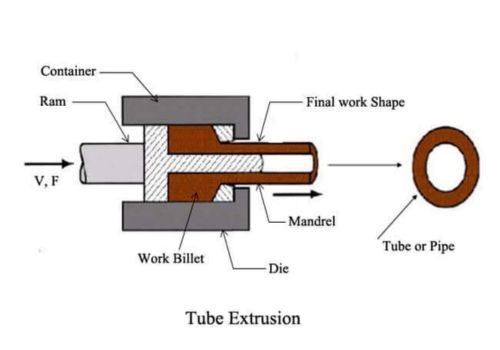
Advantages
- Dimensional Accuracy: Extrusion exploits dies to fabricate the shape of your aluminum tubes. This results in tubes with uniform wall thickness and length.
- Repeatability: Extruded aluminum tubes have one thing in common; they are consistently shaped and measured.
- Minimal Wastage: With extrusion, you will incur relatively lower material costs since this process results in comparatively less material scrap.
· Bending
This aluminum fabrication process mainly suits automotive and aerospace component manufacturing since it generates aluminum tubes with a specific bend radius.
As the name suggests, bending imparts varying curves and bends on your aluminum tubes. It involves numerous bending techniques including:
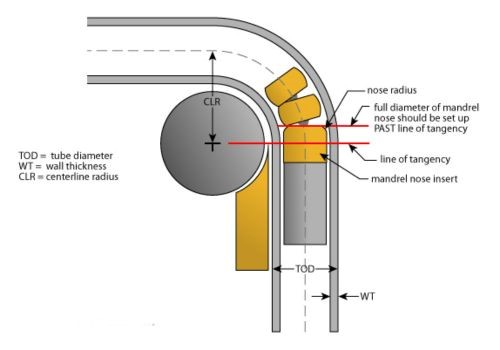
- Rotary draw bending.
- Roll bending.
- Mandrel bending.
Advantages
- Reduced Material Wastage: By utilizing bending, you eliminate the need for welding or connectors thus saving on essential materials and resources.
- Aesthetic Appeal: Aluminum tubes fabricated via bending can be visually appealing especially when enhanced with intricate curves.
- Faster Production: By utilizing bending, you are likely to achieve your desired final tube form in relatively less time. Compared to welding and using connectors, bending is quite faster.
· Cutting
Cutting simply attempts to generate aluminum tubes with your desired length. This is an essential aluminum tube fabrication process utilized in virtually all industries starting from construction to industrial manufacturing.
You can exploit either of the following aluminum tube-cutting techniques:
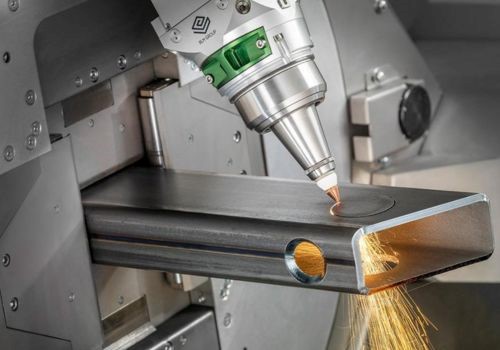
Advantages
- Precise Length: Cutting permits you to generate aluminum tubes that can fit perfectly into your existing assemblies and systems.
- High Automation Level: Contemporary cutting machines utilize CNC technology and this ensures that you are left with aluminum tubes with precise lengths.
- Minimized Material Cost: The cut-out aluminum tubes can be utilized to fulfill other functions resulting in the efficient utilization of resources.
· Drawing
This fabrication technique is mostly exploited to manufacture high-quality components for medical devices and aerospace machinery among others.
Metal drawing is designed to elongate your aluminum tubes by shrinking their diameter. It leaves you with relatively stronger aluminum tubes characterized by an appealing finish.
Advantages
- Ideal for Thin-Walled Aluminum Tubes: Drawing leaves you with lightweight aluminum tubes ideal for applications like aerospace components since it shrinks their diameter.
- Elevated Strength: Drawing improves your tube’s grain structure and this hardens your aluminum tubes.
- Dimensional Control: This fabrication process allows you to control the wall thickness of your aluminum tubes.
- Appealing Surface Finish: Drawing achieves a smoother and more appealing surface finish than other aluminum fabrication processes.
· Piercing
Piercing utilizes hydraulic presses as well as other mechanical tools to perforate openings in your aluminum tubes. This fabrication process is mainly exploited to produce aluminum components for applications like filtration systems and decorative tubes.
Advantages
- Fast: Piercing, unlike drilling can perforate numerous holes in your aluminum tube instantaneously. This leaves you with a faster turnaround time and high-volume production.
- Reduced Wastage: This process only extracts the unwanted material resulting in better utilization of resources.
- Precise Hole Creation: The pierced holes are correctly sized and this enables you to connect your aluminum tubes to your fittings or other components.
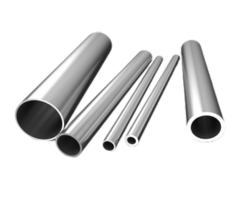
Common Aluminum Alloys Used in Tube Fabrication
Aluminum tubes are valued greatly in multiple industries and each industry favors a specific type or alloy. Each alloy comes with unique properties and these alloys include:
- 6061: This aluminum alloy is primarily exploited to produce window frames for the construction industry and automotive parts for the automotive industry. It is revered for its heat-treatability, weldability, and decorative finish.
- 6063: This alloy can be likened to the 6061 alloy in some aspects. It is, however, differentiated by its comparatively higher machinability and lower strength. It is prominently used to manufacture decorative pieces, electronic components, and other machined parts.
- 3003: The 3003 aluminum alloy is revered for its unrivalled formability hence its broad utilization in air conditioning components and roofing parts. It can be easily fabricated thus opening doors for more intricate designs.
- 7075: This alloy reigns supreme in applications demanding high-strength aluminum tubes such as aircraft components, sporting goods, and construction constituents. It is however limited by its low corrosion resistance and welding difficulty.
Applications of Aluminum Tubes
- Electronics: Thanks to their comparatively lighter weight, aluminum tubes are fabricated to form components used to manufacture consumer electronics like household appliances.
- Automotive Industry: In the automotive industry, fabricated aluminum tubes are utilized to manufacture bicycle components as well as essential car parts.
- Aerospace Industry: Essential components such as landing gears and wings feature aluminum tubes crafted using various fabrication techniques.
- Marine Industry: The high strength-to-weight ratio of aluminum tubes makes them the ideal material for essential ship components.
- Medical Devices: Fabricated aluminum tubes are easy to sterilize and are non-magnetic making them suitable for manufacturing essential medical equipment like MRI machines.
- Construction: Here, they are greatly revered for the quality of construction and plumbing equipment they deliver. These include; ladders, door frames, pipelines, and plumbing fixtures.
Conclusion
Fabricated aluminum tubes shape our lives in numerous ways, most of which go unnoticed. These pivotal pieces are only attainable thanks to the transformative fabrication processes discussed above. So, the next time you interact with a fabricated aluminum tube, remember to appreciate the manipulation process it underwent.
More resources:
Aluminum Bending 101 – Source: KDM




